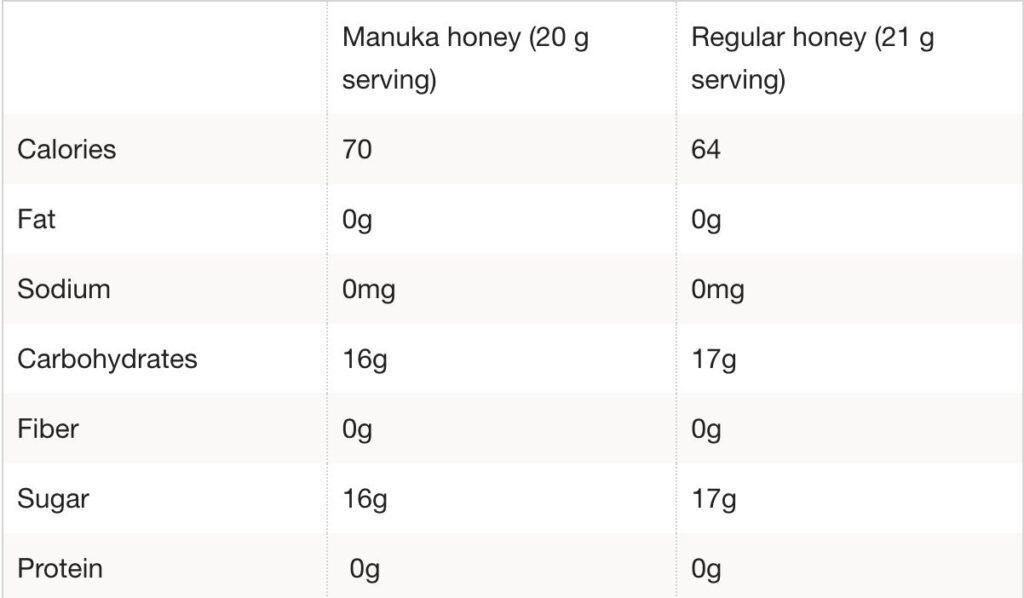
Are you curious to know the distinction between manuka honey and regular honey? Well, you’ve come to the right place! In this article, we will explore the unique qualities of manuka honey and how it sets itself apart from its ordinary counterpart. From its origins and production process to its exceptional health benefits, get ready to delve into a world of sweetness like no other. So, sit back, relax, and let’s unravel the mystery of manuka honey together.
What’s The Difference Between Manuka Honey And Regular Honey
Manuka honey and regular honey are both delicious and popular sweeteners. However, these two types of honey have distinct differences in terms of processing, origin, taste, color, texture, nutritional profile, medicinal properties, antibacterial activity, certification, and cost. Understanding these differences is essential when deciding which honey to choose for your needs. So, let’s delve into the specifics and explore the contrasts between manuka honey and regular honey.
Processing
The processing methods for manuka honey and regular honey differ significantly. Regular honey is typically obtained by extracting nectar from various flowers, which is then collected and stored by bees in their hives. Once the bees transform the nectar into honey through enzymatic processes, beekeepers can harvest the honey by extracting the combs from the hive and removing impurities.
On the other hand, manuka honey is made from the nectar of the manuka tree, scientifically known as Leptospermum scoparium, which is native to New Zealand. The bees that produce manuka honey exclusively forage on the manuka flowers, resulting in a honey with unique properties. The processing of manuka honey involves extracting the nectar from the manuka flowers, followed by similar steps of honey extraction and purification.
Origin
Manuka honey derives its name from the manuka tree, which is prevalent in New Zealand and Australia. The manuka tree blossoms during a specific period, typically in spring and early summer, when the bees have the opportunity to gather the nectar and produce this special honey. Regular honey, on the other hand, can come from various floral sources as bees visit different flowers for nectar collection.
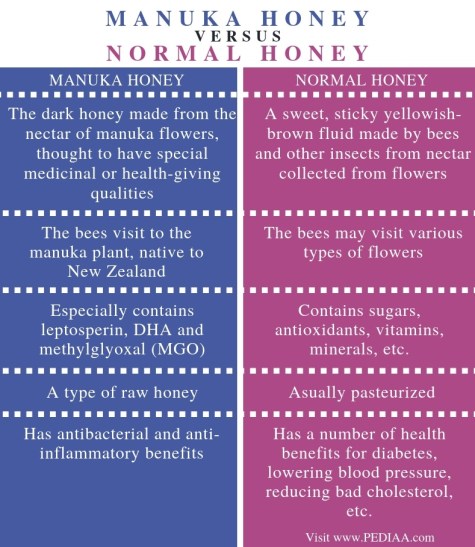
Taste
When it comes to taste, manuka honey and regular honey display noticeable differences. Regular honey is generally known for its sweet and floral notes, with varying intensities depending on the flower source. The taste of regular honey can range from mild and delicate to robust and flavorful, depending on factors such as the location and types of flowers the bees utilized for nectar collection.
In contrast, manuka honey possesses a distinct flavor profile characterized by a rich and robust taste. It often features deep earthy undertones with a hint of bitterness, making it unique and sought after. Manuka honey enthusiasts appreciate its complex flavor, which sets it apart from regular honey options.
Color
Manuka honey and regular honey can be distinguished by their color. Regular honey typically exhibits a wide range of colors, including golden, amber, or even darker shades, depending on factors such as floral source and processing techniques. The color of regular honey can sometimes be translucent, especially in lighter varieties.
Manuka honey, however, tends to have a darker hue, ranging from dark amber to a deep brown color. This darker coloration is attributed to the higher concentration of compounds and pigments present in manuka honey as a result of the specific manuka tree nectar used in its production.
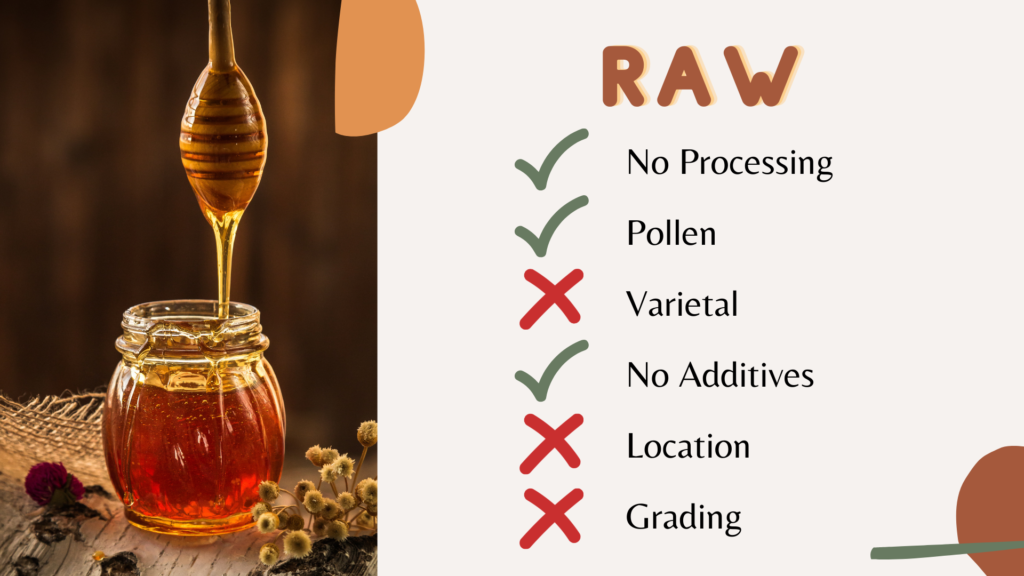
Texture
In terms of texture, both manuka honey and regular honey share similar characteristics. They are typically viscous and have a smooth, syrup-like consistency. However, the viscosity of honey can vary depending on factors such as the water content and sugar composition. Both manuka honey and regular honey exhibit the desirable traits of flow and spreadability, making them easy to use and incorporate into various culinary applications.
Nutritional Profile
Manuka honey and regular honey differ in their nutritional profiles due to variations in their floral sources and processing methods. Regular honey contains essential vitamins, minerals, antioxidants, and natural sugars, providing a source of energy. However, the specific nutrient composition of regular honey depends on the types of flowers the bees visited for nectar collection.
Manuka honey, in addition to the nutrients found in regular honey, possesses a unique combination of components. It is known to contain higher levels of methylglyoxal (MGO), a compound responsible for its potent antibacterial properties. Additionally, manuka honey contains other bioactive compounds such as phenols, proteins, and enzymes, which contribute to its medicinal qualities.
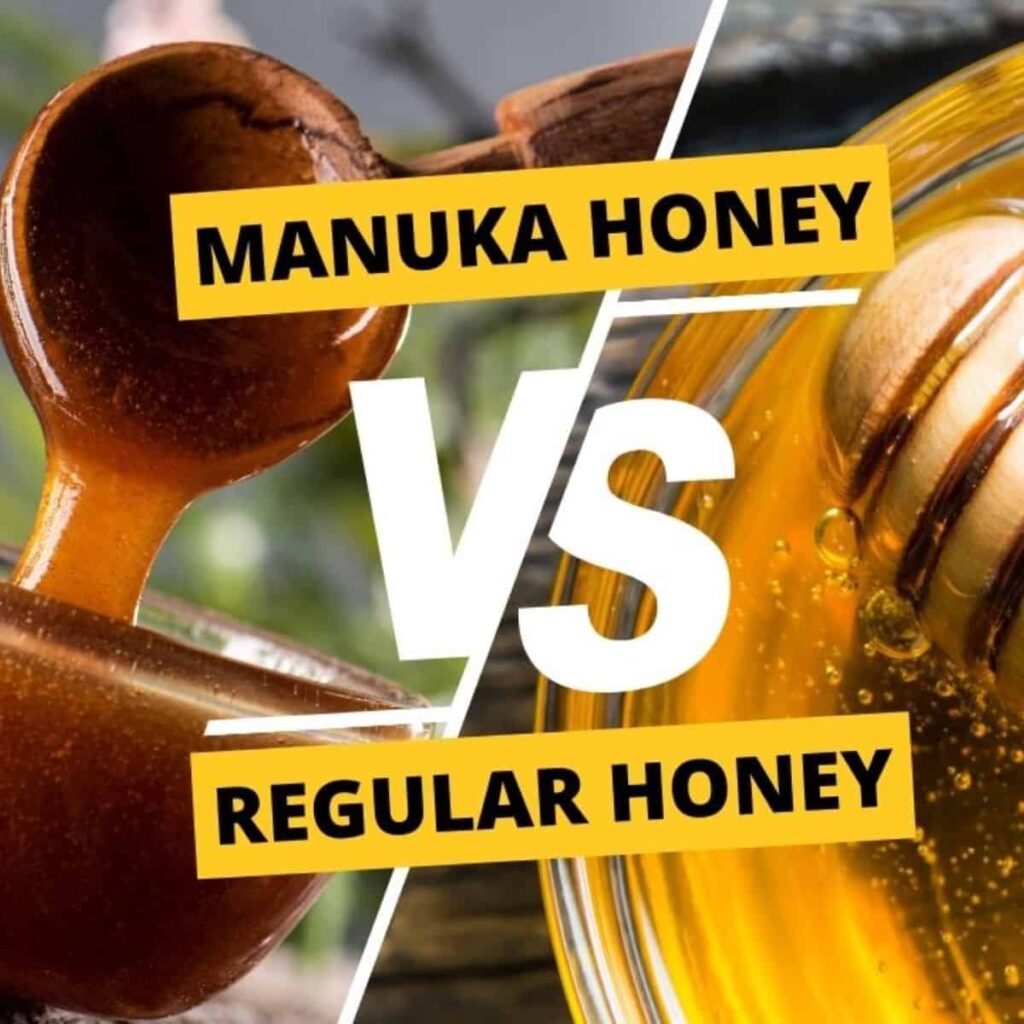
Medicinal Properties
Regular honey has been celebrated for its potential health benefits for centuries. It is known for its antioxidant properties, as well as its ability to soothe sore throats and coughs. Regular honey also possesses antibacterial properties, although to a lesser extent compared to manuka honey.
Manuka honey, on the other hand, offers a range of unique medicinal properties that set it apart from regular honey. The high levels of MGO found in manuka honey give it superior antibacterial, antiviral, and anti-inflammatory properties. This makes it highly effective in wound healing, soothing digestive issues, supporting immune function, and addressing other health concerns. The medicinal properties of manuka honey have been extensively researched and validated, making it a valued natural remedy.
Antibacterial Activity
One of the most notable distinctions between manuka honey and regular honey is their antibacterial activity. Regular honey possesses natural antibacterial properties due to the low water content and acidic pH that inhibit the growth of microorganisms. However, manuka honey surpasses regular honey in this aspect.
The antibacterial activity of manuka honey is primarily attributed to its high MGO content. MGO has been identified as the key component responsible for the honey’s potent antimicrobial activity. Scientific studies have shown that manuka honey can effectively combat antibiotic-resistant bacteria, including strains such as MRSA. This extraordinary antibacterial activity has led to the inclusion of medical-grade manuka honey in wound care products and the successful treatment of various infections.
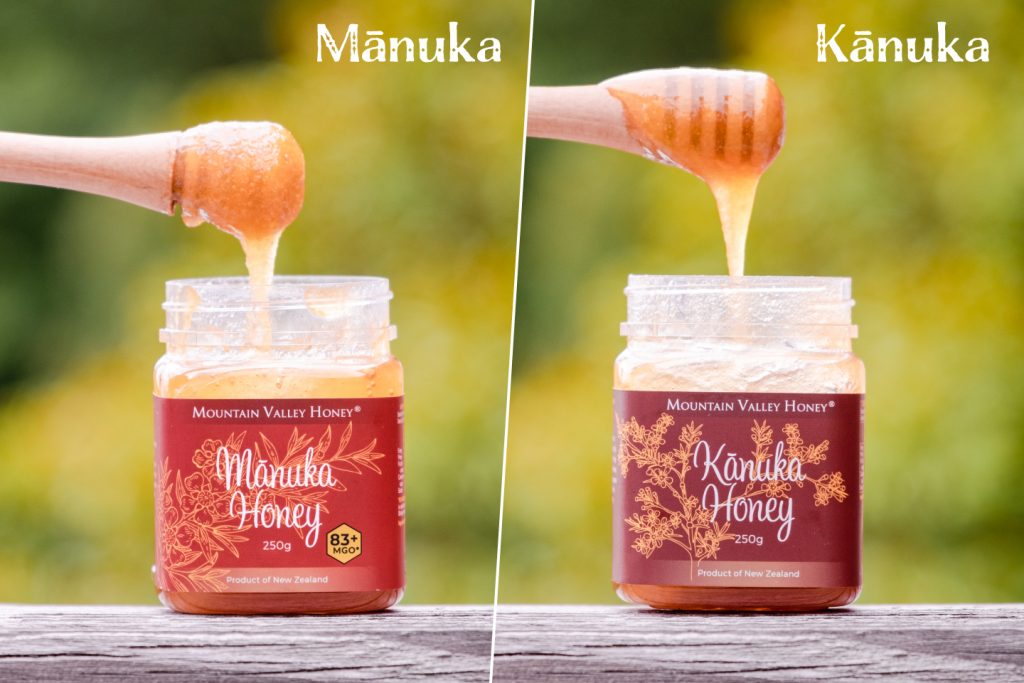
Certification
To ensure the quality and authenticity of manuka honey, a certification system has been established. The Unique Manuka Factor (UMF) certification is an independent standard that verifies the quality and purity of manuka honey in the market. It guarantees that the honey contains the necessary levels of key natural compounds, including MGO, to ensure its authenticity and potency.
Regular honey does not have a specific certification system like manuka honey. However, reputable honey producers may voluntarily adhere to strict quality control measures and certifications, providing assurance of their honey’s purity and adherence to food safety standards.
Cost
The cost of manuka honey is generally higher compared to regular honey due to various factors. Manuka honey’s limited geographical origin, specific production techniques, and labor-intensive processes contribute to its higher price tag. Additionally, the rigorous testing and certification requirements for manuka honey further drive up its cost.
Regular honey, produced in larger quantities from various floral sources, is generally more affordable. The price of regular honey can vary depending on factors such as the brand, quality, and geographic location of production.
In conclusion, manuka honey and regular honey offer distinct characteristics, flavors, and benefits. manuka honey stands out with its unique taste, dark color, exceptional medicinal properties, remarkable antibacterial activity, and stringent certification process. Regular honey, while not boasting the same intensity of medicinal qualities, provides a wide range of floral flavors and natural sweetness. Ultimately, the choice between manuka honey and regular honey depends on personal preferences, culinary needs, and desired health benefits.
